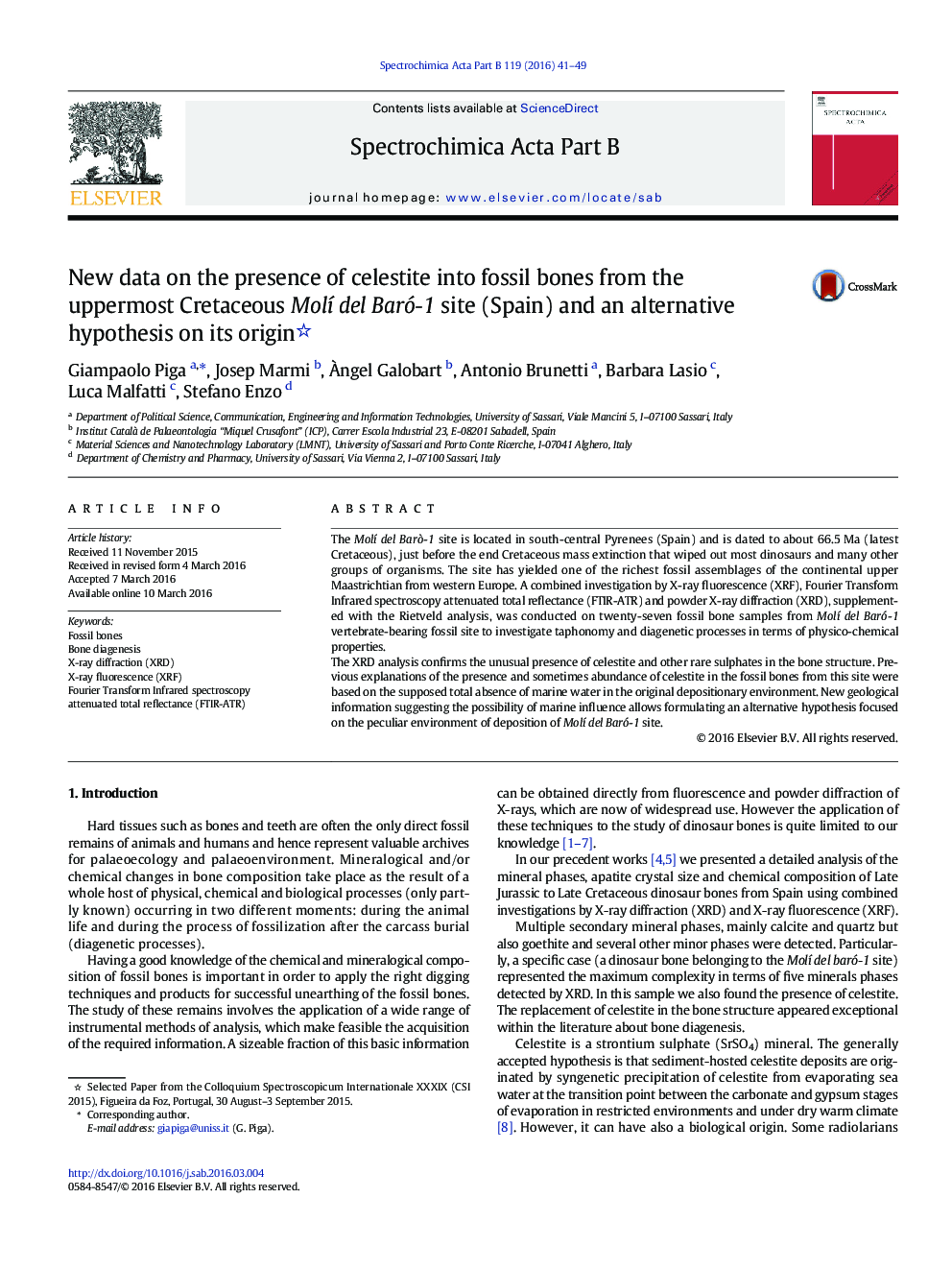| Article ID | Journal | Published Year | Pages | File Type |
|---|---|---|---|---|
| 1239462 | Spectrochimica Acta Part B: Atomic Spectroscopy | 2016 | 9 Pages |
•We have further shown the presence of celestite in bone fossils of Molì del Barò-1 site.•The XRF measurements, confirming the XRD analysis, are compatible with a partial substitution of divalent ions of Sr with Ba.•The marine influence on this site is undeniable and has led to a successful upgrade of the previous stratigraphy.•The transport mechanism of solutions celestite/barite may exist over long distances in underground fluid environments.
The Molí del Barò-1 site is located in south-central Pyrenees (Spain) and is dated to about 66.5 Ma (latest Cretaceous), just before the end Cretaceous mass extinction that wiped out most dinosaurs and many other groups of organisms. The site has yielded one of the richest fossil assemblages of the continental upper Maastrichtian from western Europe. A combined investigation by X-ray fluorescence (XRF), Fourier Transform Infrared spectroscopy attenuated total reflectance (FTIR-ATR) and powder X-ray diffraction (XRD), supplemented with the Rietveld analysis, was conducted on twenty-seven fossil bone samples from Molí del Baró-1 vertebrate-bearing fossil site to investigate taphonomy and diagenetic processes in terms of physico-chemical properties.The XRD analysis confirms the unusual presence of celestite and other rare sulphates in the bone structure. Previous explanations of the presence and sometimes abundance of celestite in the fossil bones from this site were based on the supposed total absence of marine water in the original depositionary environment. New geological information suggesting the possibility of marine influence allows formulating an alternative hypothesis focused on the peculiar environment of deposition of Molí del Baró-1 site.
